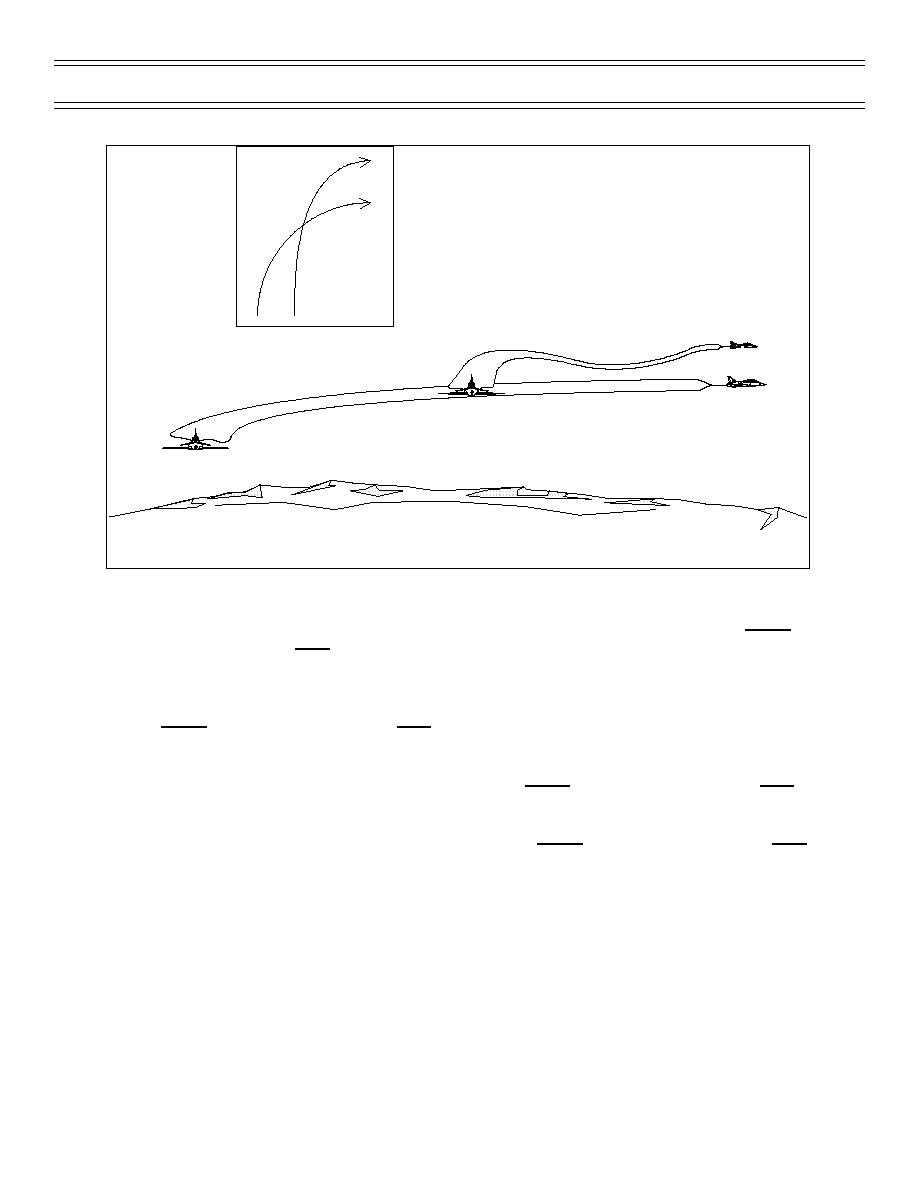
Flight Procedures
Tactical Formation
Wingman
Lead
Figure 5: CRUISE TURN INTO WINGMAN
If you start the turn acute, raise the nose to slow down initially, using less AOB than normal before
the lead crosses your six. After the lead crosses, use more AOB than normal to arrive in combat
spread.
If you start the turn sucked, lower the nose to increase airspeed initially, using more AOB than
normal before the lead crosses your six. After the lead crosses, use less AOB than normal to arrive
in combat spread.
If you start the turn wide, initially use less AOB than normal before the lead crosses your six. After
the lead crosses, use more AOB than normal to arrive in combat spread.
If you start the turn close, initially use more AOB than normal before the lead crosses your six. After
the lead crosses, use less AOB than normal to arrive in combat spread.
Away from Wingman
The lead initiates cruise turns away from the wingman (Figure 6) by transmission/response or wing
flash. The lead begins a 30-degree AOB turn, maintaining his altitude and 300 KIAS. The wingman
simultaneously initiates his turn toward the inside of the lead’s turn, using 45-60 degrees AOB, and
slightly lowering his nose to accelerate. After 45 degrees of turn, the wingman passes approximately
2,000 ft aft and slightly below the lead with a 15-20 degree heading advantage and a 25-30 kt
airspeed advantage. The wingman should not need more than a 50-kt airspeed advantage. As the
wingman passes aft and below the lead, he checks the lead’s six and calls, “Six clear.” The lead
rolls out of the turn after 90 degrees, obtains a visual, and checks the wingman’s six before calling,
“Visual, six clear.” The wingman then decreases AOB to 15-20 degrees and adjusts nose attitude to
arrive in combat spread.
Page 13
(11-98) Original


 Previous Page
Previous Page
